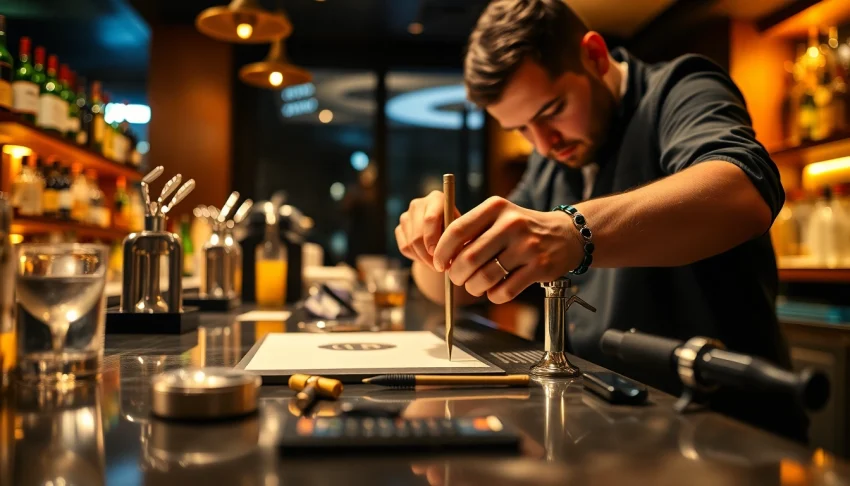Understanding Back Bar Repair: What You Need to Know
1. Introduction to Back Bar Repair
Back bar repair is a crucial aspect of maintaining a well-functioning bar, whether it’s in a home, restaurant, or a commercial setting. The back bar is not only a functional area for storing and displaying beverages but also serves as a key design element that enhances the overall aesthetic of the bar space. A damaged back bar can detract from the appearance of your establishment and may impede the efficiency of service. Understanding how to address back bar repairs can save time and money, making it vital for bar owners and managers. If you are considering back bar repair, you are taking a significant step toward restoring both functionality and visual appeal in your space.
2. Common Reasons for Back Bar Damage
Several factors contribute to the wear and damage of back bars over time. Understanding these causes can help in preventing further issues and in executing effective repairs:
- Wear and Tear: Frequent use can lead to scratches, dents, and other cosmetic damage, especially in high-traffic areas.
- Moisture Damage: Spills and humidity can cause warping or mold growth, particularly in wooden back bars.
- Impact Damage: Accidental bumps and collisions with glasses, bottles, or equipment can lead to structural damage.
- Improper Installation: A back bar that is not properly installed may become unstable, resulting in cracks and breakage over time.
3. Tools and Materials Required
Before attempting any back bar repair, it’s essential to gather the right tools and materials. Here is a basic list to ensure you are equipped for a successful repair:
- Wood glue or epoxy (for wood repairs)
- Screwdriver (for loosening or tightening screws)
- Hammer (for gentle nudges without causing additional damage)
- Pry bar (for removing damaged pieces)
- Sandpaper or a sander (for smoothing rough edges)
- Paint or wood finish (for aesthetic restoration)
- Protective gear (gloves and goggles for safety)
Evaluating the Damage: Before You Start
1. Assessing Structural Integrity
Before you dive into repairs, it’s critical to determine the extent of the damage. Start by examining the back bar for signs of instability or severe wear. Check for loose sections, cracks, or signs of water damage. A thorough assessment will guide your repair strategy, whether that means patching small areas or undertaking more extensive rebuilding.
2. Identifying Repairable vs. Replaceable Parts
Not all damage can be repaired. It’s essential to identify parts that can be restored versus those that need replacing. For example:
- Minor scratches and dents: These can often be sanded down and refinished.
- Cables or wiring: Damaged electrical components should be replaced for safety reasons.
- Wood panels: If they are beyond repair due to rot or severe cracks, replacement may be necessary.
3. The Importance of Safety Measures
When repairing a back bar, always prioritize safety. Make sure the area is well-ventilated, especially when using adhesives or paints that may emit fumes. Wearing gloves and goggles can protect against splinters and harmful substances.
Step-by-Step Guide to Back Bar Repair
1. Preparing the Workspace
A clean and organized workspace is essential for effective repairs. Clear the back bar of all items, including bottles and glassware. Ensure you have sufficient lighting and lay down a drop cloth to protect the surrounding area from tools and debris.
2. Repair Techniques for Common Materials
The repair method will depend on the material of your back bar. Here are some common techniques:
- Wooden Back Bars: For scratches, use sandpaper to smooth edges and apply a touch of wood finish for repair. Use epoxy for fixing cracks and reinforcing weakened joints.
- Metal Back Bars: Clean any rust with a wire brush and apply rust-resistant paint. For dents, gently hammer the area, being cautious not to cause further damage.
- Glass Back Bars: Small cracks may be repaired with specialized glass glue, while significant damage may necessitate replacement.
3. Finishing Touches and Maintenance Tips
After completing the repairs, examine the work done to ensure everything is secure and aesthetically pleasing. Apply a protective seal if necessary, especially for wood. Regular maintenance, such as cleaning and checking for new damage, will extend the life of your back bar.
Professional Back Bar Repair Services: When to Seek Help
1. Benefits of Hiring Professionals
While some repairs can be handled DIY style, hiring professionals can save time and ensure the job is done correctly. Their expertise means they have the experience and tools necessary to restore your back bar efficiently and effectively.
2. How to Choose a Reliable Repair Service
When seeking professional repair services, consider the following factors:
- Experience: Look for companies that specialize in bar furniture and have a proven track record.
- Reviews: Check online reviews and testimonials to gauge customer satisfaction.
- Warranty: Ensure that the service offers a warranty on their workmanship to protect your investment.
3. Cost Considerations for Back Bar Repairs
The costs associated with back bar repairs can vary based on factors such as the extent of the damage, materials needed, and labor rates in your area. On average, anticipate expenses ranging from $100 for minor repairs to several hundred dollars for complex renovations. Always request an estimate before proceeding with any work.
Maintaining Your Bar: Tips for Longevity
1. Regular Inspection and Maintenance
Implementing a routine inspection schedule will help catch minor issues before they cascade into significant repairs. Check for loose fittings, moisture accumulation, and signs of wear regularly.
2. Protective Treatments for Wood and Metal
Applying protective coatings or sealants can help resist damage from spills, heat, and humidity. For wooden surfaces, consider using oil or polyurethane finishes, while metal surfaces can benefit from anti-rust treatments.
3. Seasonal Care for Back Bars
Changing seasons can introduce new challenges for the back bar. For winter, consider additional heating elements to prevent moisture-related damage, while summer may require effective cooling solutions to maintain a stable temperature for your beverages.
